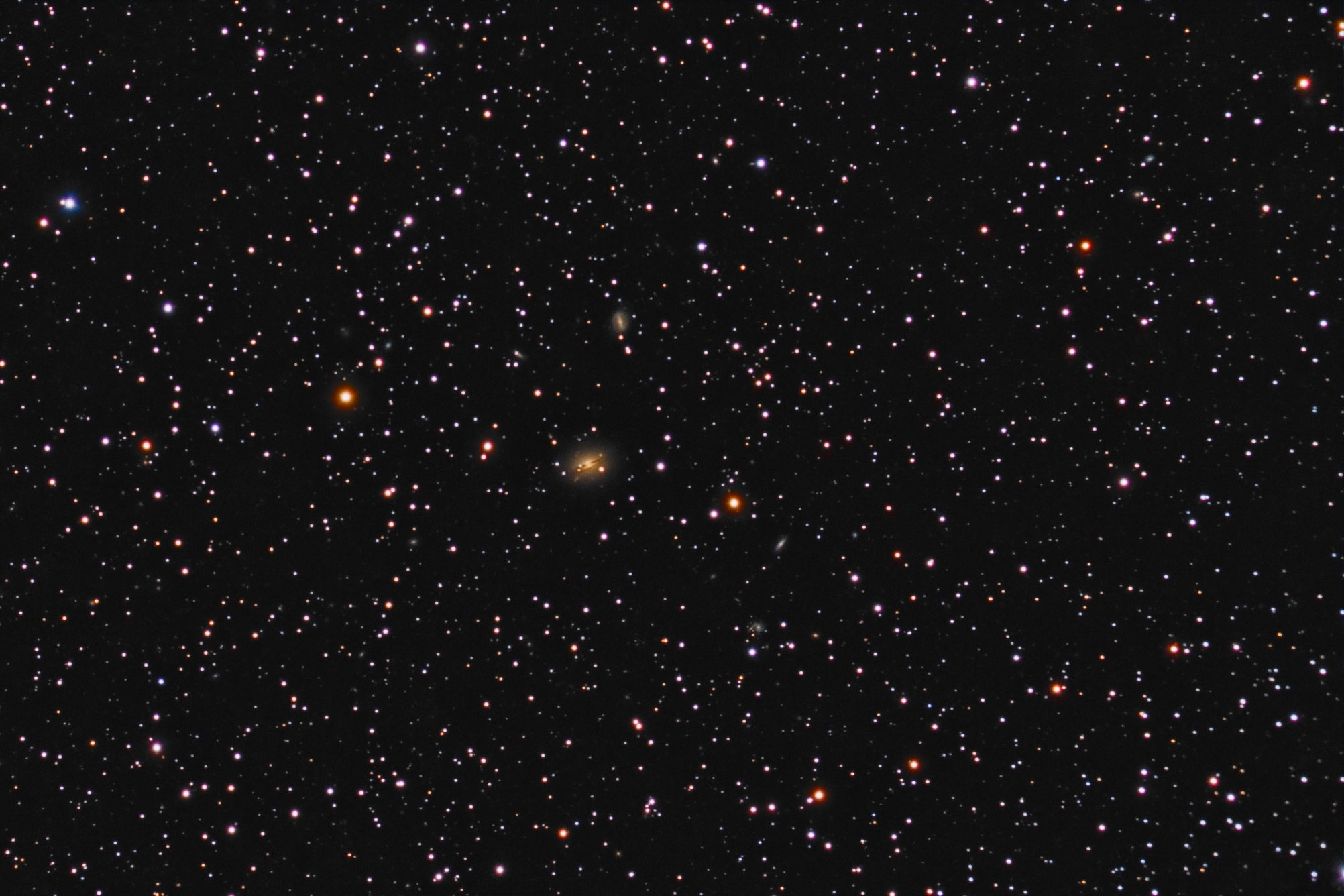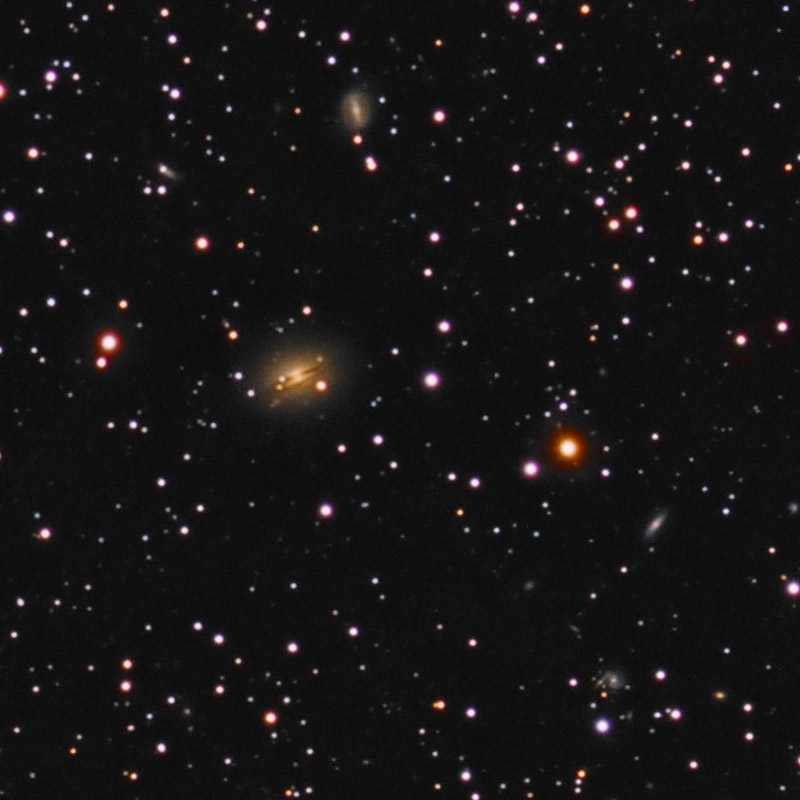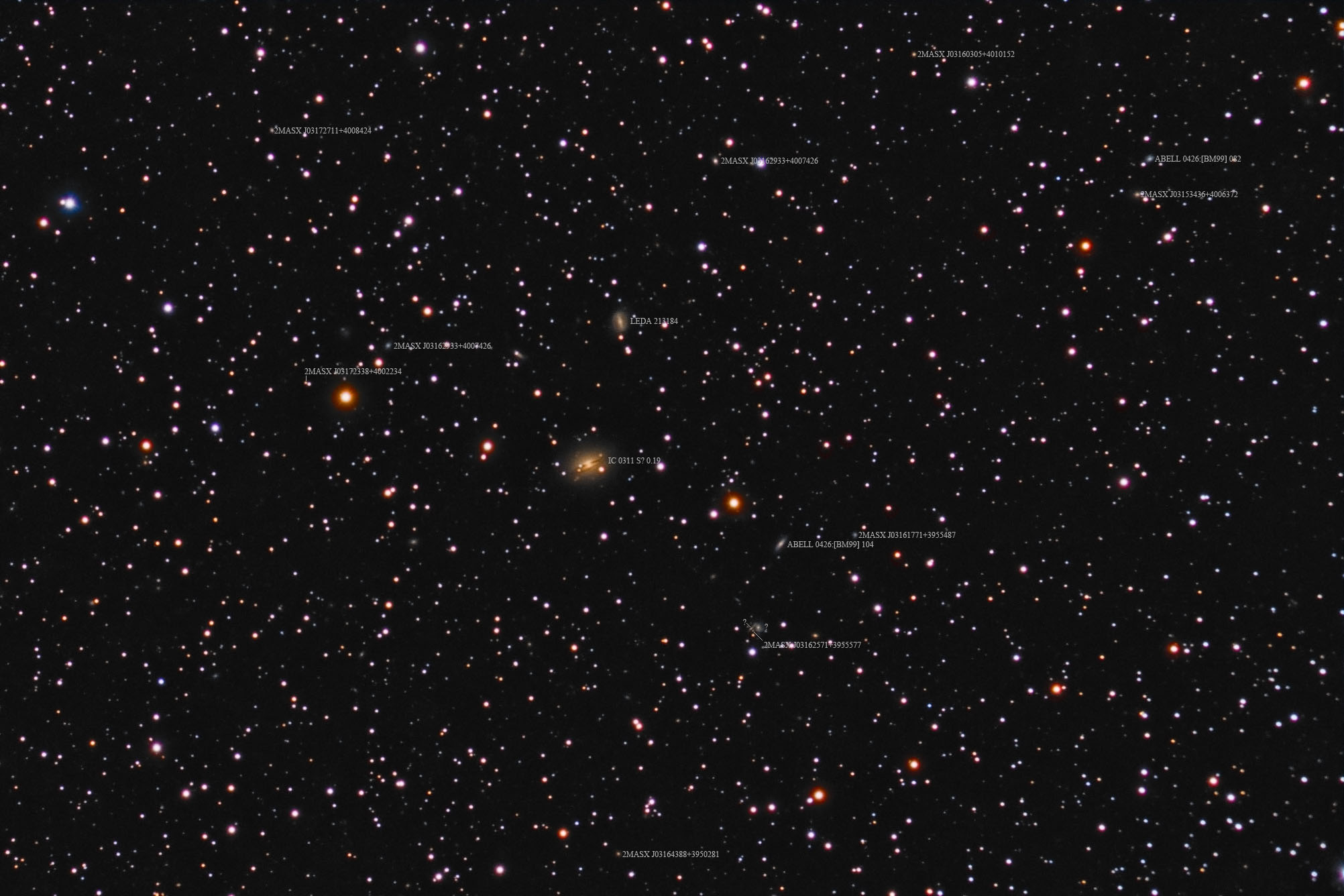| Description | Images |
Object name: IC0311Designation(s): IC0311, IC 311 is a very strange edge on? galaxy on the south-southeast edge of the Perseus Galaxy Cluster, Abell 426. It is located about 190 million light-years away. The cluster has an average distance of 240 million light-years so it isn't likely a member of the cluster. What drew my interest to this galaxy is that it appears to be an edge on spiral galaxy seen very close to perfectly edge on. The dust lane bisects the galaxy perfectly. But then there's a second dust lane below the linear one. This one is curved and appears to be in two parts. There's a sudden jog a bit right of the vertical axis where this second dust lane jumps north a bit on the western (right) side. The lane seems tilted with respect to the galaxy itself and the dust lane running directly through the core. Is this second dust lane due to something IC 311 is digesting? I found absolutely nothing on it other than a comment in one paper that it exists. But that doesn't mention the sudden break offsetting the northern and southern parts by about the dust lanes diameter. I measure its diameter at about 90 thousand light-years so it is a respectable spiral. There is some disagreement as to classification. NED says S? while Seligman says Sb? pec. I much prefer Seligman's take on it. That second dust lane where none should be certainly is peculiar. It was discovered by Lewis Swift on October 10, 1888. Related Designation(s):2MASS J03164672+4000129, 2MASX J03164671+4000132, 2MASXi J0316467+400013, 87GB 031327.9+394920, 87GB[BWE91] 0313+3948, ABELL 0426:[BM99] 122, CGCG 0313.5+3950, CGCG 540-076, GB6 J0316+4000, HDCE 0219 NED040, IC 0311, IC0311, LCSB L0174O, LDCE 0224 NED157, NSA 133274, NVSS J031646+400011, PGC 012177, UGC 02625, [JBB2007] J031646.72+400013.0 , [MO2001] J031646.7+400012.6, |


